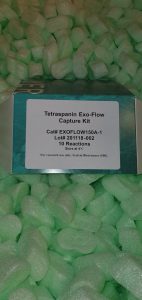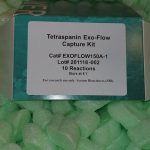Intracranial stress (ICP) is derived from cerebral blood and cerebrospinal fluid (CSF) circulatory dynamics and might be affected within the course of many illnesses of the central nervous system. Monitoring of ICP requires an invasive transducer, though some makes an attempt have been made to measure it non-invasively. Because of its dynamic nature, instantaneous CSF stress measurement utilizing the peak of a fluid column through lumbar puncture could also be deceptive. An averaging over 30 minutes ought to be the minimal, with a interval of in a single day monitoring in aware sufferers offering the optimum customary. Computer-aided recording with on-line waveform evaluation of ICP could be very useful. Although there isn’t a “Class I” proof, ICP monitoring is beneficial, if not important, in head harm, poor grade subarachnoid haemorrhage, stroke, intracerebral haematoma, meningitis, acute liver failure, hydrocephalus, benign intracranial hypertension, craniosynostosis and so forth. Information which might be derived from ICP and its waveforms consists of cerebral perfusion stress (CPP), regulation of cerebral blood movement and quantity, CSF absorption capability, mind compensatory reserve, and content material of vasogenic occasions. Some of these parameters enable prediction of prognosis of survival following head harm and optimisation of “CPP-guided remedy”. In hydrocephalus CSF dynamic checks assist prognosis and subsequent monitoring of shunt perform.
Cerebral ischemia causes cell swelling and breakdown of the blood-brain barrier (BBB). Cytotoxic edema outcomes from vitality failure, and vasogenic edema happens when the blood vessels are broken. Proteases and free radicals are the tip end result of a molecular harm cascade. Matrix metalloproteinases (MMPs) are a gene household of extracellular matrix-degrading enzymes that disrupt the BBB. Tight junction proteins (TJPs), occludin and claudin-5, which type the endothelial barrier, are weak to assault by MMPs. Basal lamina proteins, corresponding to rat fibronectin, laminin, and heparan sulfate, are additionally degraded by MMPs. Reperfusion harm results in a biphasic opening of the BBB, with the early opening occurring a number of hours after the onset of reperfusion because of activation of the constitutive enzyme gelatinase A (MMP-2). This preliminary opening is transient and adopted 24 to 48 hours later by extra intense harm to the blood vessel, which is related to the expression and activation of gelatinase B (MMP-9) and stromelysin-1 (MMP-3). Synthetic MMP inhibitors restore the early integrity of the BBB however are ineffective within the later opening. Because these inhibitors block MMPs concerned in angiogenesis and neurogenesis, additionally they sluggish restoration. The problem is to establish brokers that may defend the BBB, blocking vasogenic edema with out interfering with restoration.

Physiology of vitreous surgical procedure.
Vitreous surgical procedure has varied physiological and medical penalties, each useful and dangerous. Vitrectomy reduces the danger of retinal neovascularization, whereas rising the danger of iris neovascularization, reduces macular edema and stimulates cataract formation. These medical penalties could also be understood with the assistance of classical legal guidelines of physics and physiology. The legal guidelines of Fick, Stokes-Einstein and Hagen-Poiseuille state that molecular transport by diffusion or convection is inversely associated to the viscosity of the medium. When the vitreous gel is changed with much less viscous saline, the transport of all molecules, together with oxygen and cytokines, is facilitated. Oxygen transport to ischemic retinal areas is improved, as is clearance of VEGF and different cytokines from these areas, thus lowering edema and neovascularization.
At the identical time, oxygen is transported quicker down a focus gradient from the anterior to the posterior phase, whereas VEGF strikes in the other way, making the anterior phase much less oxygenated and with extra VEGF, stimulating iris neovascularization. Silicone oil is the exception that proves the rule: it’s extra viscous than vitreous humour, re-establishes the transport barrier to oxygen and VEGF, and reduces the danger for iris neovascularization within the vitrectomized-lentectomized eye. Modern vitreous surgical procedure entails a range of remedy choices along with vitrectomy itself, corresponding to photocoagulation, anti-VEGF medicine, intravitreal steroids and launch of vitreoretinal traction. A full understanding of these remedy modalities permits smart mixture of remedy choices. Retinal photocoagulation has repeatedly been proven to enhance retinal oxygenation, as does vitrectomy. Oxygen naturally reduces VEGF manufacturing and improves retinal hemodynamics. The VEGF-lowering impact of photocoagulation and vitrectomy might be augmented with anti-VEGF medicine and the permeability impact of VEGF decreased with corticosteroids. Starling’s regulation explains vasogenic edema, which is managed by osmotic and hydrostatic gradients between vessel and tissue.
[Linking template=”default” type=”products” search=”Goat antibody to or anti-Mouse IgG – Affinity purified” header=”2″ limit=”120″ start=”4″ showCatalogNumber=”true” showSize=”true” showSupplier=”true” showPrice=”true” showDescription=”true” showAdditionalInformation=”true” showImage=”true” showSchemaMarkup=”true” imageWidth=”” imageHeight=””]
It explains the impact of VEGF-induced vascular permeability modifications on plasma protein leakage and the osmotic gradient between vessel and tissue. At the identical time, it takes under consideration hemodynamic modifications that have an effect on the hydrostatic gradient. This consists of the affect of arterial blood stress, and the impact oxygen (laser remedy) has in constricting retinal arterioles, rising their resistance, and thus lowering the hydrostatic stress within the microcirculation. Reduced capillary hydrostatic stress and elevated osmotic gradient scale back water fluxes from vessel to tissue and scale back edema. Finally, Newton’s third regulation explains that vitreoretinal traction decreases hydrostatic tissue stress within the retina, will increase the stress gradient between vessel and tissue, and stimulates water fluxes from vessel into tissue, resulting in edema.
